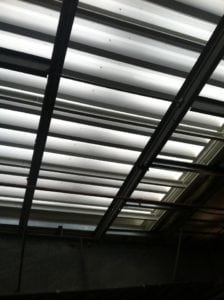How Does Natural Ventilation Reduce Humidity?
Proper natural ventilation design is a crucial component for ensuring a healthy building environment. Not only does a natural ventilation system lower temperatures and make floor personnel more comfortable, it can also reduce humidity throughout a building. The natural ventilation isn’t 100% effective though so you can use a dehumidifier in the places that aren’t helped by natural ventilation. If you want a dehumidifier, you can find out more here.
Natural roof ventilators reduce humidity by removing moist air from the building. A ventilator exhausts humid air out of the building instead of trapping it inside. A natural ventilation device, like a Labyrinth natural ventilator, facilitates air movement and allows the hot, stick air to freely leave the building.
Humid air has the tendency to affect everything it touches and can be detrimental to environmental conditions, machinery, and worker morale. High humidity can lead to a variety of problems.
 Rust & Corrosion
Rust & Corrosion
High humidity has the potential to do massive damage to insulation, equipment, and buildings. Warm, damp air is a breeding ground for mold. If left unchecked this can create a number of problems for infrastructure and staff. Mold can often be hard to spot until its well on its way.
More common in steel buildings however is the threat of rust and corrosion. Dense, humid air can wreak havoc on metal in its path. So when steel roof beams lay in a humid area they can get damaged fast. Any machinery in the area also faces this risk. In very humid work environments keeping up with this maintenance is often a full-time job by itself. However, there are structures with a steel framework that can be beneficial for warehouse use, fabric buildings by Norseman Structures can be the better solution for structural building, they can fit the specifications of the customer so it is worth looking at to see if it is a better fit for you.
Reduce Humidity to Improve Work Conditions
Humid air is dense and it manifests as fog. That means humid air will lay a haze over the whole work floor. Furthermore, because humid air is heavy with moisture, it tends to set at the ground level. This has a tendency to reduce visibility and increase the risk of accidents. A natural ventilator, supported by intake air supply, allows humid air to rise up and out of the building.
Working in a humid building can also have a negative effect on workers. In addition to the aforementioned problem of reduced visibility, there are other issues as well. Humid air feels hotter, regardless of the temperature. Moist air leads to increased perspiration and greater fatigue. It can be exhausting working in a humid building and almost impossible for workers to get their jobs done. Natural ventilation is the key to a more arid work floor and happier workers
In conclusion, proper ventilation is the key to reducing humidity. Certain facilities, like paper plants and any process that uses steam, have the tendency to get very humid, very quickly. Contact Moffitt today to get a handle on your plant’s temperature and reduce humidity today.
